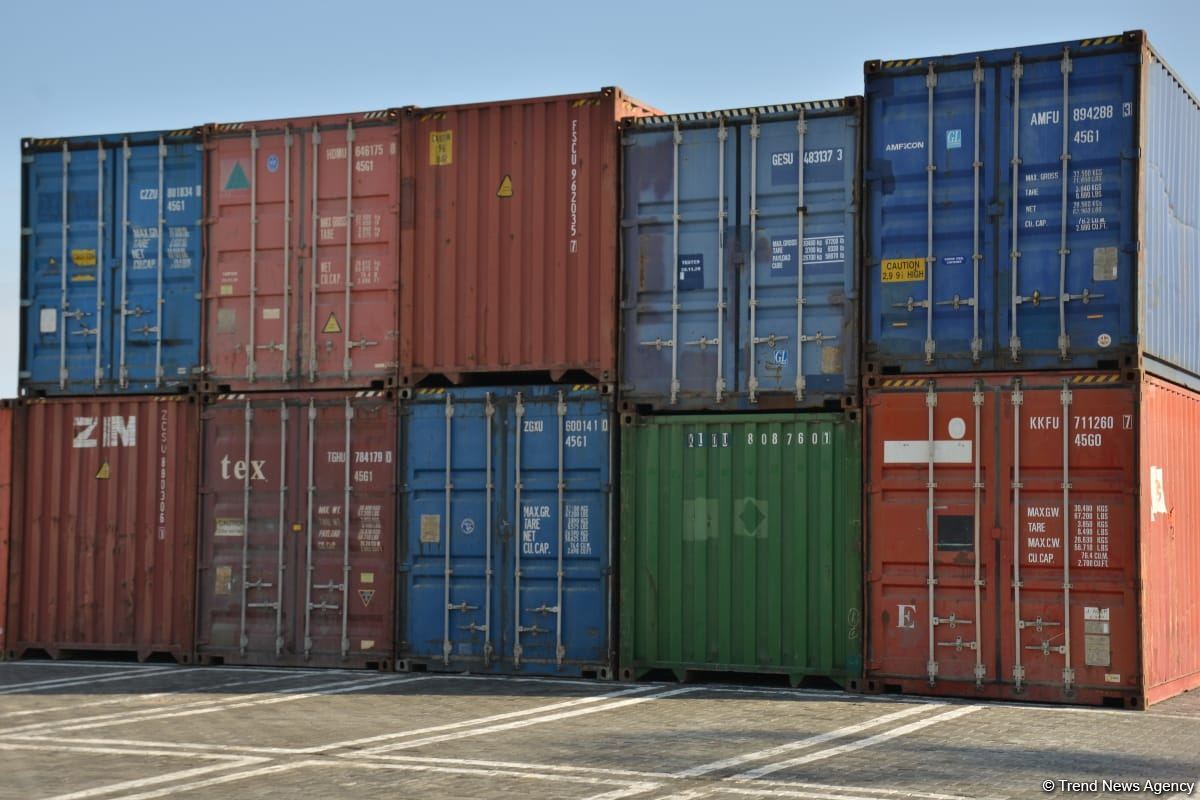BAKU, Azerbaijan, April 13. Azerbaijan's legal entities and individuals conducted trade operations with partners from 144 countries worldwide from January through February of this year, exporting goods to 85 countries and importing from 138 countries.
Data obtained by Trend from the State Statistical Committee shows that the foreign trade turnover of Azerbaijan, considering the estimated value of crude oil and natural gas exports that were not fully customs cleared, amounted to $8.21 billion in the reporting period.
Of this turnover, $4.07 billion (49.6 percent) accounted for exports, and $4.14 billion (50.4 percent) - imports, resulting in a trade balance deficit of $64.8 million. Compared to the first two months of 2024, the foreign trade turnover grew by 27.2 percent in nominal terms and 9.2 percent in real terms. Imports rose by 39 percent in real terms, while exports decreased by 8.9 percent.
The exports of non-oil and gas products totaled $485 million from January through February 2025, up 6.6 percent in nominal terms from the same period in 2024, but down 12.6 percent in real terms.
Data from the State Customs Committee indicates that Azerbaijan's foreign trade turnover was distributed as follows: 25.6 percent with Italy, 11.3 percent with Türkiye, 11.2 percent with Russia, 8.4 percent with China, 5.5 percent with Germany, 2.7 percent with Australia, 2.6 percent with the Czech Republic, 2.4 percent with the UK, 2.1 percent each with Croatia and Mexico, two percent with Romania, 1.7 percent with Georgia, 1.6 percent with Greece, 1.5 percent each with Switzerland and Bulgaria, 1.3 percent each with Ireland and Portugal, 1.2 percent each with Brazil, Iran, and the US, 1.1 percent with Canada, 1.0 percent with Ukraine, and 9.5 percent with other countries.
The export value distribution is as follows: 46.3 percent to Italy, 12 percent to Türkiye, six percent to Germany, 4.7 percent to the Czech Republic, 3.9 percent to Croatia, 3.5 percent to Romania, 3.2 percent to Russia, 2.7 percent each to Georgia, Bulgaria, and Greece, 2.3 percent each to Ireland and Portugal, two percent to Switzerland, 1.5 percent to the UK, one percent to Serbia, 0.9 percent to Ukraine, 0.3 percent to Kazakhstan, and 0.2 percent each to China, Belarus, the US, Israel, and the UAE, with one percent to other countries.
In non-oil and gas product exports, Russia (31.1 percent), Türkiye (17.1 percent), Georgia (10.9 percent), Switzerland (9.0 percent), Ukraine (8.5 percent), Kazakhstan (2.5 percent), Belarus (2.2 percent), the US (2.1 percent), Israel (2.1 percent), Germany (1.7 percent), the UAE (1.7 percent), Turkmenistan (1.3 percent), Uzbekistan (1.1 percent), and Italy (1.1 percent) held the largest shares.
For imports, 20.5 percent of the total value came from Russia, 17.8 percent from China, 10.4 percent from Türkiye, 5.8 percent from Australia, 4.8 percent from Germany, 4.5 percent from Mexico, 3.4 percent from the United Kingdom, 2.6 percent from Brazil, 2.5 percent from Iran, 2.3 percent each from the US and Canada, 1.8 percent from Italy, and smaller percentages from Kazakhstan, Uzbekistan, Korea, Belarus, Japan, Ukraine, and Turkmenistan, with 10.3 percent from other countries.
In comparison with the same period last year, from January through February 2025, exports of major products increased as follows: fresh fruit by 23.3 percent, sugar by 59.3 percent, fruit and vegetable preserves by 9.0 percent, vegetable oils by 25.6 percent, tea by 24.9 percent, mineral fertilizers by 5.4 percent, cement clinker by 26.8 percent, black metal pipes by 81.5 percent, black metal rods by 43.4 percent, while fresh vegetables increased by 0.2 percent, fruit and vegetable juices by 36.3 percent, tobacco by 70.9 percent, margarine and other food blends by 38.6 percent, natural grape wines and grape concentrate by 27.3 percent, potatoes by 71.5 percent, cotton fiber by 26.8 percent, polypropylene by 25.9 percent, polyethylene by 1.9 percent, electricity by 51.7 percent, unprocessed aluminum by 21.6 percent, cotton yarn by 18.4 percent, and bentonite clay by 16.4 percent.
In contrast, imports of certain products increased significantly: wheat by 39.1 percent, butter, other milk fats, and pastes by 79.8 percent, raw sugar by 86.8 percent, tea by 72.9 percent, potatoes by 0.2 percent, passenger cars by 27.3 percent, steel products by 30.2 percent, black metal rods by 2.7 times, rubber tires by 19.2 percent, trucks by 6.9 percent, polyethylene by 13.3 percent, buses by 4.4 times, polypropylene by 11.2 percent, while fresh fruit imports increased by 16.9 percent, chocolate and chocolate products by 9.6 percent, vegetable oils by 52.5 percent, flour confectionery by 19.6 percent, poultry and its products by 13.6 percent, fresh vegetables by 0.8 percent, beef by 11.1 percent, medicines by 26.4 percent, black metal pipes by 31.3 percent, computing machines, blocks, and equipment by 18.5 percent, furniture by 34.3 percent, synthetic detergents by 20.4 percent, mineral fertilizers by 7.8 percent, washing machines by 1.8 percent, household air conditioners by six percent, black metal corners by 2.0 percent, household refrigerators by 4.1 percent, and cement by 7.2 percent.







